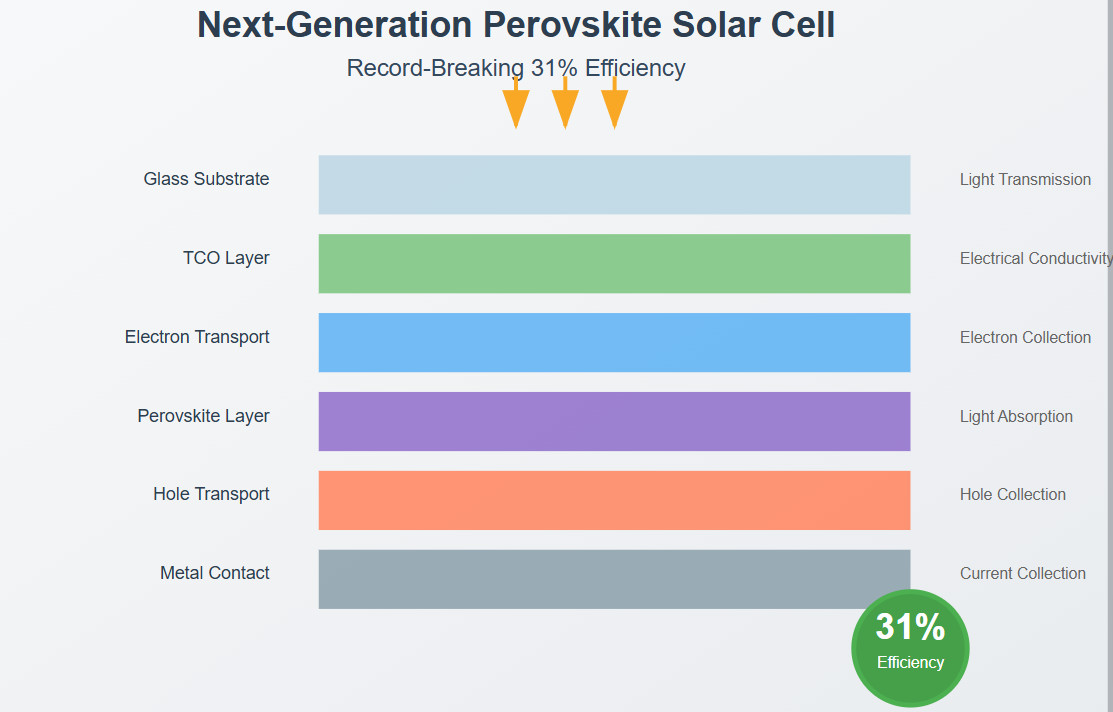We are gradually getting to a world where machines could understand and learn from experience, adapt to new inputs, and perform tasks that typically require human intelligence. This is the intriguing realm of Artificial Intelligence (AI), a field that has transformed from an abstract notion to an indispensable component of our daily lives in just a few short decades. This article will delve into the origins of AI, revealing its remarkable journey from the theoretical musings of visionaries like Alan Turing and Marvin Minsky, through groundbreaking milestones such as the establishment of the first AI labs and the development of pioneering models like Deep Blue and Siri. We’ll also explore the profound implications of AI for our modern world – from revolutionizing industries to enabling life-enhancing advancements in healthcare, finance, and education. Join us on this fascinating adventure as we uncover the captivating history of Artificial Intelligence and its meteoric rise.
Advancements in AI Technology
Which industries benefit most from AI automation with highest ROI?
Speaking of which, there are several industries that have been considerably transformed by the implementation of Artificial Intelligence (AI) automation. Finance is one such industry where AI has had a tremendous impact, particularly in risk assessment and predictive analysis. The use of machine learning algorithms allows financial institutions to process large amounts of data more efficiently than ever before. This not only increases productivity but also enhances the accuracy and reliability of risk assessments and forecasting.
Healthcare is another field where AI automation has been gaining prominence, primarily due to its application in diagnostics. By analyzing vast repositories of medical data, AI models are able to accurately detect patterns that may be indicative of diseases. Furthermore, chatbots and virtual assistants in the healthcare sector provide instant and cost-effective care for patients with common ailments.
Let’s not overlook manufacturing industries, where the implementation of AI in areas such as predictive maintenance and process optimization has significantly streamlined operations. For instance, predictive analytics can help reduce downtime by alerting when maintenance is needed before any significant machinery damage occurs, while optimizing workflows helps improve efficiency and cut costs.
Among these industries, it’s worth noting that finance’s application of AI for risk assessment is often lauded for the substantial returns it brings about, providing both time-to-insight improvements and financial gains. Healthcare, on the other hand, enjoys the immediate impact on patients’ lives through quicker, more accurate diagnoses. Manufacturing stands to benefit most from predictive maintenance in reducing production losses due to machinery downtime.
What are the latest advancements in deep learning for improved pattern recognition and decision-making?
So, here’s the thing. Deep learning, a subset of machine learning in artificial intelligence (AI), has seen some truly fascinating developments in recent times. It seems we’ve reached a new milestone where models are able to learn and improve their pattern recognition skills beyond our wildest imaginations.
First, let’s chat about transformers. These are models based on attention mechanisms, which allow the model to focus on specific parts of an input instead of processing it in sequence, making them incredibly effective for handling long sequences like texts, codes or even images! One example is BERT (Bidirectional Encoder Representations from Transformers) – it revolutionized NLP by learning both forward and backward context, outperforming traditional LSTM models.
Next up are Generative Adversarial Networks (GANs), which continue to impress us. GANs have shown remarkable success in generating highly realistic images or even sounds by having two neural networks work in opposition. The generator network produces the image/sound, and the discriminator network judges if it is real or not; these interactions lead to improved quality through feedback.
Finally, there are significant advances in reinforcement learning. AlphaGo, one of the most notable achievements, beat the world champion Go player in 2016 with techniques like Monte Carlo tree search combined with deep neural networks, but recent years saw more advanced techniques such as deep Q-learning and DQN (Deep Q-Networks).
These innovations open new possibilities for advanced AI systems to excel at various tasks involving complex decision making, further refining our understanding of machine learning algorithms’ capabilities.
How do advancements in algorithms enhance machine learning capabilities?
Let’s shift our focus to the fascinating world of machine learning and its interaction with sophisticated algorithms. You see, as machine learning models grow increasingly complex, their capacity for understanding and tackling intricate tasks also expands. In this dynamic landscape, we witness the emergence of advanced algorithms that boost performance, providing substantial advantages in numerous domains.
First, there are deep learning models, such as convolutional neural networks and recurrent neural networks, which enable machines to identify patterns and learn from raw data, even without explicit programming. This unlocks new opportunities in various sectors, like image recognition and natural language processing, leading to groundbreaking results.
Next, there’s reinforcement learning, which harnesses the power of reward signals to guide models in optimizing their strategies, making machines learn on their own and continuously adapt and improve, much like a child learns from its environment.
Furthermore, algorithms incorporating attention mechanisms can process and learn from sequences with varying lengths, proving beneficial for natural language tasks with complex structures. These advancements bring machine learning systems closer to human-like cognitive abilities, granting them an enhanced capacity for solving multifarious, challenging problems.
So in essence, advanced machine learning algorithms pave the way for machines to excel at intricate tasks by expanding their learning and problem-solving capabilities, unraveling vast potentials for applications across numerous industries.
Applications of Artificial Intelligence
Which industries experience significant efficiency gains from AI use?
Imagine experiencing a bustling production floor, where robots and machines collaborate with human workers. The atmosphere is filled with an intriguing blend of silence from the sophisticated machinery and intermittent chatter amongst the human team members. Each worker, aided by an AI-driven system, optimally manages tasks in real-time based on historical data.
Consider healthcare, where diagnoses are made swiftly and accurately with machine learning models that analyze extensive patient data, prioritizing urgent cases, and scheduling treatments. Imagine finance industries processing complex financial transactions with minimal errors by incorporating natural language processing techniques. Customer service chatbots and voice-activated personal assistants, providing 24/7 support and quick resolution for simple requests.
Manufacturing witness production efficiencies boosted by predictive maintenance systems that schedule routine machine checks before malfunctions occur, saving time and resources. Farming industries optimize their operations with drones and satellite technology powered by AI. Transportation networks operate more efficiently through self-driving cars and optimized public transport routes based on historical traffic patterns.
These are but a few examples of AI’s impact, as it seeps into industries, revolutionizing workflows and making everyday tasks more efficient.
How can businesses implement AI tools for productivity gains while ensuring security?
Kicking off with some insights I’ve gained from my exploration of artificial intelligence and its applications in businesses, let me share my perspective on this topic. Businesses today are increasingly integrating AI tools into their operations to enhance productivity, streamline processes, and gain a competitive edge. But, ensuring that AI integration is successful isn’t always a walk in the park – it comes with unique challenges, particularly concerning data security.
To effectively address productivity gains from AI adoption, businesses need first to assess their specific business process requirements, the appropriate use cases for AI technology, and potential implementation strategies. They could start small, pilot an AI solution in a non-sensitive area, or invest in consulting services or workshops to guide the transformation journey.
Now, when it comes to maintaining data security – this is a critical factor businesses should never overlook. One approach they can take to address security concerns involves:
1. Designing a robust cybersecurity framework
2. Implementing access controls, such as Multi-factor Authentication (MFA) and role-based access control, and
3. Adopting encryption techniques for AI systems’ sensitive data at rest, in transit, and during computation.
Furthermore, continuous monitoring and regular training of employees about best security practices play a crucial role in keeping their valuable information secure. A balance should always be struck between productivity and security considerations while integrating AI tools in business operations.
Which AI innovations offer cost savings and better customer experience in our industry?
Is it just me, or does it feel like every other day a new use of AI in business is making waves with impressive cost reductions and enhanced customer experiences in our line of work? It’s quite fascinating to witness how AI technology continuously transforms operations. Here are a few creative examples that come to mind:
1. Chatbots and virtual assistants, integrated with natural language processing algorithms, are now capable of handling basic queries from customers around the clock without human intervention, which results in significant cost savings on staffing. They’re also able to learn and improve, thus providing a personalized experience for customers.
2. Predictive maintenance solutions using machine learning are revolutionizing equipment upkeep. By analyzing historical data of machinery, these AI models can foresee potential breakdowns and suggest preventative measures before incidents occur, leading to cost savings by preventing expensive repairs and maintaining consistent production levels.
3. Intelligent process automation for routine tasks can cut down manual efforts substantively while improving accuracy and efficiency. This can help businesses reduce operational expenses by freeing up resources to focus on higher value-added work.
4. Predictive analytics tools can glean insights from consumer behavior and sales trends, empowering marketing teams with invaluable knowledge. These predictions allow companies to target specific promotions to individuals at the most effective times, thus increasing returns on marketing investment.
Ethical Considerations and Implications of AI
What are the international regulations for ethical AI usage in businesses?
Switching gears, it’s interesting how technology and ethics intersect in today’s world, isn’t it? The ethical implementation and use of AI in business practices are indeed governed by a number of international laws and regulations. However, let me emphasize that while I’m not a legal expert, I’ll do my best to give an informative yet contrastive perspective on this topic.
On one hand, there are general principles like the UN Guiding Principles on Business and Human Rights which advocate for businesses to respect human rights in their operations, including the right to privacy. AI systems must be designed, developed, and deployed with transparency and accountability. They should also ensure informed consent, as AI makes decisions that affect individuals and society.
On the other hand, specific regulations like the European Union’s General Data Protection Regulation (GDPR) provide guidelines on data collection, storage, and processing, ensuring the protection of individual data in a rapidly changing technological landscape. Similarly, the OECD Principles on Artificial Intelligence establish a set of recommendations to ensure AI is developed in a way that aligns with ethical values like respect for privacy, fairness, non-discrimination, accountability, and transparency.
Moreover, various international treaties such as the United Nations Convention on Certain Conventional Weapons (CCW) and the Biological Weapons Convention address potential military applications of AI to uphold the principles against weapons that are unduly injuring or suffering, thereby promoting ethical considerations in the technological domain.
As we delve deeper into these complexities, it is important to remember that the ethical use of AI in business practices is an ongoing effort requiring continuous adaptation and advancement to meet the demands of evolving technologies, societies, and economies.
What are the main ethical issues with using AI in businesses?
Let’s break down the question of ethics and AI in business operations into smaller, manageable parts. First, we know that as technology advances and becomes more integrated into our lives, including in businesses, certain moral issues come to the forefront. Ethical concerns around data privacy and security are at the top of this list.
In a business context, using AI means collecting, storing, and processing large volumes of personal information, raising the question of who has access to it, how it’s protected, and what happens if breached. Furthermore, there is a need to consider fairness in AI decisions – making sure no bias or discrimination seeps into algorithms used, potentially leading to consequences like unequal treatment among customers, employees, or both.
Additionally, accountability and transparency are critical ethical issues with the implementation of AI. It’s crucial that there is clear responsibility for AI misbehaviors, which could otherwise lead to potential damage if left unchecked. And considering how these advanced systems make decisions behind the scenes, it’s essential that businesses communicate how AI functions, enabling end users to understand and trust the system.
Another area of concern relates to the impact of automation on human employment – an important ethical question for society as a whole. How will these intelligent tools replace jobs currently carried out by humans? What new opportunities will emerge instead? Ethics require that we address the fairness and overall well-being of those affected.
These ethical dilemmas must be approached with careful thought and open dialogue as we navigate the integration of AI in business operations.
What are the ethical implications of using AI in business with privacy concerns?
Is it just me, or does it seem like privacy is becoming an increasingly complex issue in today’s technological landscape, especially when it comes to integrating AI systems into businesses? You see, there’s this fascinating paradox at play – on the one hand, AI can offer countless benefits for organizations: enhanced efficiency, better decision-making, improved customer experiences… the list goes on. But on the other hand, it raises some serious concerns over how businesses handle their customers’ information.
Now, suppose you have a potential solution to address privacy matters as part of your new AI implementation. In that case, you might need to think through some crucial steps that can help alleviate these ethical dilemmas. To begin with, make sure all data collection and usage practices are transparent for users – be clear on how the system processes, stores, and protects their information.
Moreover, have strict consent procedures in place – if an AI system makes decisions impacting individuals based on their data, make it explicit and obtain proper authorization from these individuals beforehand. Also, consider adopting an “opt-in” rather than the conventional “opt-out” approach. It might lead to a slightly lower adoption rate but builds stronger trust.
Always remain accountable and open about potential missteps – humans make mistakes; so too can AI systems, albeit in a slightly different way. It’s essential that businesses take responsibility for any data mishandlings or errors their AI systems may create. Being transparent with stakeholders not only builds trust but also demonstrates accountability.
That’s my take on it; what’s your perspective on the delicate balancing act between implementing AI solutions and safeguarding users’ privacy?
Subsection: How can businesses ethically implement AI in their organization?
Looking at the complexities of businesses integrating AI, it’s essential for organizations to stay true to ethical principles. A first step is recognizing potential ethical implications – biased algorithms or data misuse.
To ensure adherence, transparency becomes a crucial aspect. Companies need to provide clarity around how AI is used, from the collection and processing of data through to final decisions being made. Ethics committees or boards, consisting of diverse professionals, can also be established for oversight.
Another significant area lies in handling sensitive information: robust privacy policies should govern data handling and usage – always protecting individuals’ privacy, including data ownership rights and anonymity. Furthermore, it is crucial to apply these standards uniformly; disparities can lead to breaches of trust within a business and even public relations damage.
Moreover, AI must not be used to replace employees unilaterally without due consideration for the impacts on individuals. Businesses must carefully manage how AI integrates into employment, with employee training opportunities provided as part of the process – ensuring they’re an asset, rather than a threat, for staff.
Regular audits can serve to check the ethical soundness and progressiveness of AI implementations; allowing organizations to stay responsive to shifting ethical concerns while maintaining public trust.
What are the major ethical considerations in creating AI systems for businesses?
It’s no secret that the development of AI systems, especially in the business context, brings about several intriguing yet complex ethical considerations. The ethical landscape is vast and multifaceted, but let me outline some essential issues.
There’s privacy – safeguarding personal data, protecting users from unintended exposure, and respecting consent are primary concerns in the implementation of business AI. Biased data sets used for training these systems can lead to perpetuating harmful societal stereotypes. Furthermore, transparency is a must; how the AI makes decisions should be clear and open for public understanding.
The human impact is crucial. Many businesses use AI for automation, leading to potential job losses – although this change could also free up humans to perform more high-value work. The impact on employees and their morale during transition periods should be considered, and it’s vital that these workers are re-skilled to meet new employment requirements.
Accountability comes into play as we often can’t assign human blame for AI actions gone awry – there should be checks and balances put in place for oversight of the systems’ functioning, and there must be clear consequences for mistakes or unintended consequences that they may cause.
AI development should align with ethical frameworks. Should businesses build and use systems that adhere to universal values and norms? Or might they choose to disregard them due to commercial gains? And what role should governments or regulatory bodies have in maintaining balance and ensuring AI ethics align with societal expectations?
These complexities illustrate why ethical considerations are a fundamental piece of designing and developing effective, morally-aligned business AI systems.
How does transparency ensure ethics in AI use for businesses?
The reality is, transparency and accountability are two crucial elements when it comes to ensuring that Artificial Intelligence (AI) is used ethically in business environments. Transparency refers to the degree to which information about an AI system’s data inputs, processes, outputs, and decision-making logic is accessible and comprehensible. On the other hand, accountability denotes the responsibility of an organization to address and correct any errors, biases, or undesirable behavior from their AI applications.
The combination of these two factors fosters an ethical use of AI for several reasons. Transparency ensures that businesses using AI are aware of how their systems behave and can mitigate potential issues. It also enables them to identify the data being used to make decisions, making it easier to evaluate and address any ethical concerns or biases that may arise. Furthermore, understanding an algorithm’s reasoning helps maintain fairness in business processes by exposing and rectifying potential inequitable treatment towards users, competitors, or employees.
Accountability enables businesses to own up to any ethical mishaps or oversights involving their AI systems and take appropriate steps to rectify them. It encourages proactive engagement with ethical challenges, addressing issues before they escalate, minimizing potential damage to brand reputation or legal repercussions. By taking a transparent and accountable stance in utilizing AI technology, organizations build trust not only within the organization but also among stakeholders like employees, consumers, regulators, and the public.
Transparency and accountability play integral roles in the ethical application of AI systems. They empower businesses to maintain trust through effective management of their algorithms and ensure adherence to ethical guidelines while reaping the benefits this technology provides.
How can businesses ensure ethical AI systems, addressing bias and discrimination?
Now imagine you’re at a cozy café, sipping a warm cup of cappuccino. Let’s picture a corporation striving to create unbiased AI systems while upholding ethical guidelines. Firstly, they recognize the need for transparency in their data collection and preprocessing methods. This means gathering diverse representation of demographic groups and meticulously ensuring data quality – removing potential sources of bias.
Next up is algorithmic fairness, where businesses can apply various techniques like Statistical Parity Difference (SPD), Disparate Impact (DI), or Equalized Odds Post-processing. These methods ensure that outcomes are evenly balanced for all groups in terms of true positive/negative rates.
Model explanations and interpretability play an essential role here. Developing clear, easily understood AI decision trees can enable quick detection of unintended biases or errors and help teams correct them swiftly.
Companies must set up bias mitigation and inclusion policies for their development and hiring processes, such as recruiting individuals from underrepresented backgrounds. This ensures that a diverse and inclusive team creates AI systems sensitive to a broad spectrum of user demographics and experiences.
What are the ethical implications of unregulated AI in business?
Everyone knows that artificial intelligence, just like any powerful technology, can significantly impact our world when not handled responsibly. While some benefits are evident – increasing efficiency, automating mundane tasks, and driving innovations – the unintended consequences of improper regulation within a business context are a cause for concern.
Consider this: unchecked use of AI could lead to a loss of jobs due to automation, potentially leading to unemployment or underemployment for workers. Furthermore, there’s a risk of bias creeping into algorithms, as these systems may be influenced by the data they’re trained on or developed based on flawed assumptions. Ethical dilemmas may arise when AI makes critical decisions that could harm people, either physically or emotionally.
Privacy issues become increasingly important when dealing with vast amounts of sensitive personal information being managed by businesses using advanced AI systems. If not addressed, such concerns could result in an infringement on individual freedoms and potential reputational damage for the businesses themselves.
The legal and ethical frameworks may not keep pace with advancements in technology. This vacuum can create ambiguity regarding responsibilities and liabilities surrounding AI usage within business settings, further fueling potential harm and unintended consequences.
In essence, everyone acknowledges that properly regulating and ethically implementing AI use within a business context is essential to ensure social good and mitigate the potential downsides for all stakeholders involved.
How does AI’s impact on jobs align with ethical business practices regarding employment?
Now, diving deeper, it’s crucial to acknowledge that Artificial Intelligence (AI) is becoming increasingly integrated into various aspects of businesses worldwide. In essence, AI can automate repetitive and labor-intensive tasks, which has raised valid concerns about the potential for employment losses due to job displacement. On the ethical side of business practices, there are a few dimensions we should explore.
Companies using AI have a responsibility towards their workforce and the larger society. They must be transparent about AI implementations’ impact on employment and provide training programs for workers to learn new skills necessary in the era of advanced automation. This ethical imperative includes both investing in upskilling their workforces and communicating clearly with affected employees about the changes taking place.
Businesses must also address fairness in hiring processes. As AI tools can process large volumes of data rapidly to determine the best candidates, they must ensure that they do not discriminate based on gender, race or other non-merit related factors. Fair representation and equal opportunities are vital in today’s diverse workforces.
There’s a need for social safety nets as AI becomes more prevalent in various industries. Governments, organizations and businesses alike must explore and provide financial and educational assistance to help those affected by technological advances in employment, creating new opportunities through training and reemployment services.
Now, understanding both the potential negative impacts on jobs due to AI integration and its ethical responsibilities in mitigating such effects can provide valuable insights in shaping informed conversations on the matter between businesses, employees and the public at large.
When should businesses address ethics in implementing an AI system?
Now, on to discussing an intriguing question about integrating ethical considerations in the different stages of deploying an AI system in a business context. Let’s muse over this issue and share thoughts from a perspective that may seem somewhat unconventional. You see, when envisioning a company’s AI journey, one can divide it into three main milestones: creation, initialization, and perpetual operation.
1) During the development phase, ethical concerns center around how the data is sourced, curated, and labeled to ensure unbiased algorithms. Designing a model that is inclusive, free from harmful biases, and transparent is essential. Data privacy also emerges as a primary issue – how does one secure sensitive data used for training while complying with regulations such as GDPR or CCPA?
2) The second milestone involves initializing the AI system’s deployment within an organization. At this stage, ethical considerations might revolve around responsible usage and fair application of the system. Questions related to job displacement due to automation and ethical training and handling of sensitive business information need consideration. Transparency plays a critical role here since employees should feel informed about their role within an increasingly digital ecosystem.
3) The perpetual operation phase is when the system impacts daily business decisions, sometimes with profound consequences. It is crucial that ethical boundaries are consistently upheld in ongoing usage – particularly where automation interfaces with human workforces. Aligning AI to support human decision-making while minimizing potential unintended negative effects becomes critical. Ethical frameworks like the IEEE’s Global Initiative on Ethics in Artificial Intelligence (IEEE-EIAI) can help guide decisions made throughout this stage.
Future of Artificial Intelligence
Artificial Intelligence, or AI, is a buzzword that has been making headlines for quite some time now. It’s no longer just a futuristic concept but a reality that is transforming our daily lives in countless ways. From voice-activated assistants like Siri and Alexa to self-driving cars, AI is increasingly becoming an integral part of how we live, work and interact with technology.
But what exactly is AI? Simply put, it’s a type of computer system designed to mimic human intelligence – the ability to reason, learn, and problem solve. It can be as simple as a rule-based expert system or as complex as a neural network capable of processing vast amounts of data in real-time.
Now, you might be wondering what all this means for us. Well, AI is set to revolutionize industries, from healthcare to finance, and the possibilities are endless. It can process huge amounts of data, learn from it, and make decisions based on that learning, enabling organizations to gain insights and make informed decisions faster than ever before.
However, as with any technology, there are challenges to overcome. Ethical considerations, privacy concerns, and the need for transparency in AI decision-making are just a few of the issues we’ll need to grapple with as we move forward.
AI is an exciting field, and it’s essential that we approach its development and implementation thoughtfully and responsibly. It’s up to us, as individuals and organizations, to ensure that AI enhances our lives rather than causing harm or exacerbating existing biases. Remember, the goal isn’t just to build intelligent systems but to create a world where technology is in harmony with humanity.











Hello there, just became aware of your blog through Google, and found that
it is really informative. I am going to watch out for brussels.
I’ll be grateful if you continue this in future. A lot of people will be benefited from your
writing. Cheers! Escape rooms
Hi, There’s no doubt that your web sit could popssibly be
having web browser compatibility issues. When I take a look at your site in Safari, it
looks fine however, when opening inn IE, it has some
overlapping issues. I merely wanted tto provide you with a
quick heads up! Besides that, fantastic website!